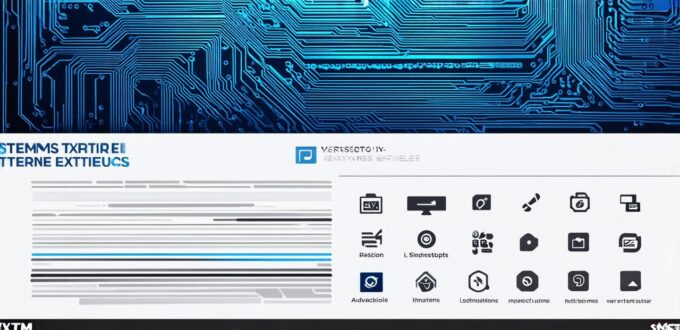System software is an essential component of any computing system. It provides the infrastructure and support that allows application software to run efficiently and effectively. Understanding the different types of system software is crucial for software developers as it helps them to develop more effective solutions for their clients. In this expanded article, we will explore the different types of system software in greater detail and their roles in modern computing systems.
Operating Systems (OS)
The operating system (OS) is the most important type of system software. It is responsible for managing all the resources of the computer, including hardware, memory, and storage devices. The OS provides an interface between the hardware and software components of a computer. It manages tasks such as resource allocation, process scheduling, and device drivers. Examples of modern operating systems include Windows, macOS, Linux, and Android.
Operating systems are designed to be user-friendly and provide a consistent interface for users to interact with their computers. They also offer security features that help protect the computer from malware and other types of threats. Some operating systems, such as Linux, are open-source and allow users to customize the software to meet their specific needs.
Device Drivers
Device drivers are another type of system software. They are responsible for translating the commands of application software into instructions that can be understood by hardware devices. For example, a graphics card driver translates the commands of a graphics application into instructions that can be understood by the graphics card. Device drivers are an essential component of any operating system as they allow application software to communicate with hardware devices and access their resources.
Device drivers can also improve the performance of a computer system. For example, a driver for a high-performance graphics card can significantly improve the speed and quality of images displayed on a monitor. Device drivers are typically written in low-level programming languages such as assembly language, which allows them to interact directly with hardware devices.
Firmware
Firmware
is a type of system software that is embedded in hardware devices such as routers, switches, and network adapters. It provides instructions for how the device should operate and interact with other devices on the network.
Firmware
is typically written in low-level programming languages such as assembly language.
Firmware
can improve the security of a computer system by providing additional layers of protection against malware and other types of threats. For example, firewalls are a type of firmware that is responsible for protecting a computer from unauthorized access.
Firmware
can also improve the performance of a computer system by optimizing its settings and configuration for specific tasks.
Boot Loaders
Boot loaders are a type of system software that is responsible for loading the operating system into memory when the computer starts up. They are typically stored in non-volatile memory such as ROM or EEPROM. Boot loaders are responsible for initializing the hardware, loading the kernel of the operating system, and passing control to it.
Boot loaders can improve the security of a computer system by allowing users to choose which operating system they want to boot up. This can prevent unauthorized access to the computer or malware from running on it. Boot loaders can also be customized to optimize the performance of a computer system for specific tasks.
Utility Software
Utility software is a type of system software that provides various functions that support the operation of other software. These functions include file management, disk cleanup, network configuration, and security. Examples of utility software include Antivirus software, disk cleanup tools, and network configuration utilities.
Utility software can improve the efficiency and effectiveness of a computer system by automating repetitive tasks and providing additional features that are not available in other types of software. For example, an antivirus program can scan a computer’s files and folders for malware and remove it, preventing further damage to the system.
Interaction between Types of System Software
The different types of system software interact with each other in various ways. For example, the operating system interacts with device drivers to manage hardware resources. Device drivers interact with firmware to ensure that hardware devices are properly initialized and configured. Boot loaders interact with utility software to load the operating system into memory and configure the computer for use.
The interaction between different types of system software is essential for the overall functioning of a computer system. Without proper communication and coordination between these software components, a computer system would not be able to function properly or efficiently.
Conclusion
In conclusion, understanding the different types of system software is crucial for any software developer.

